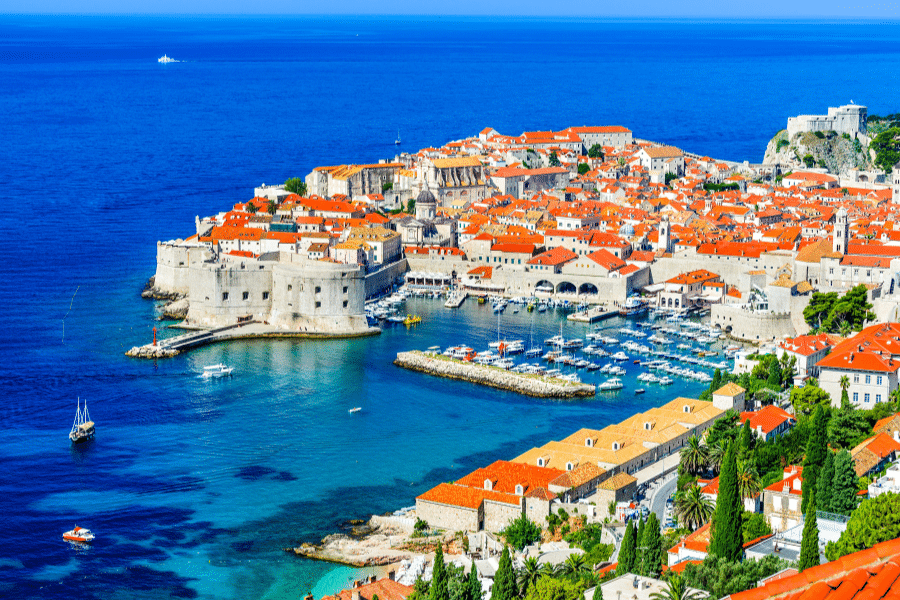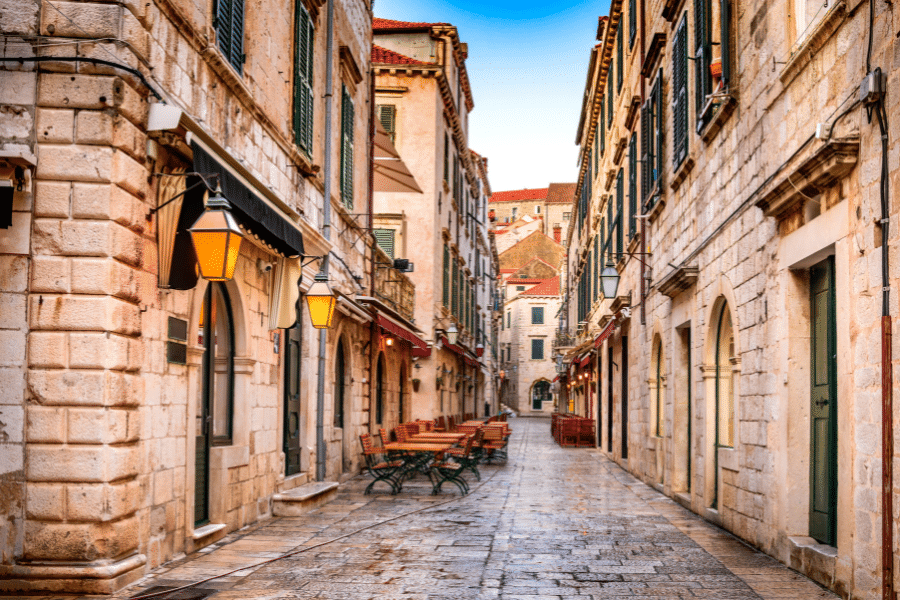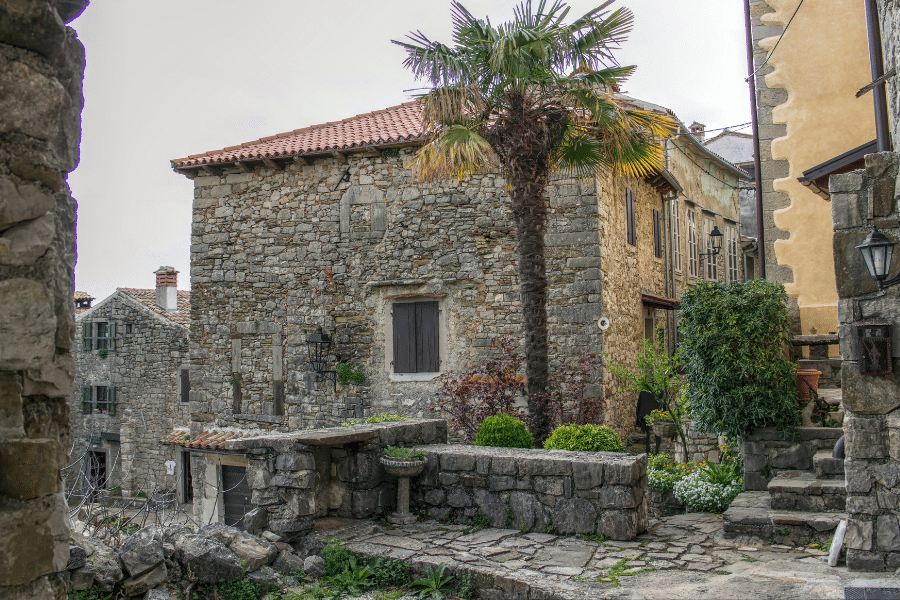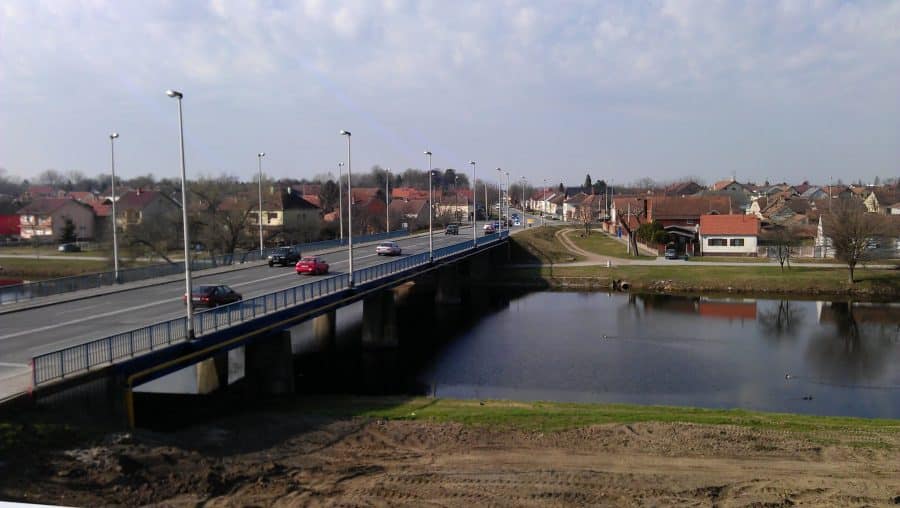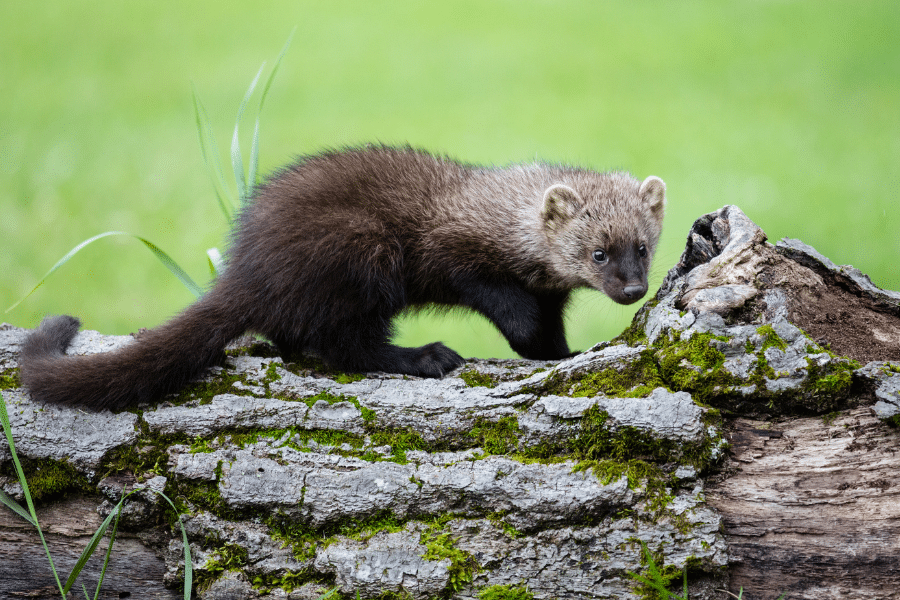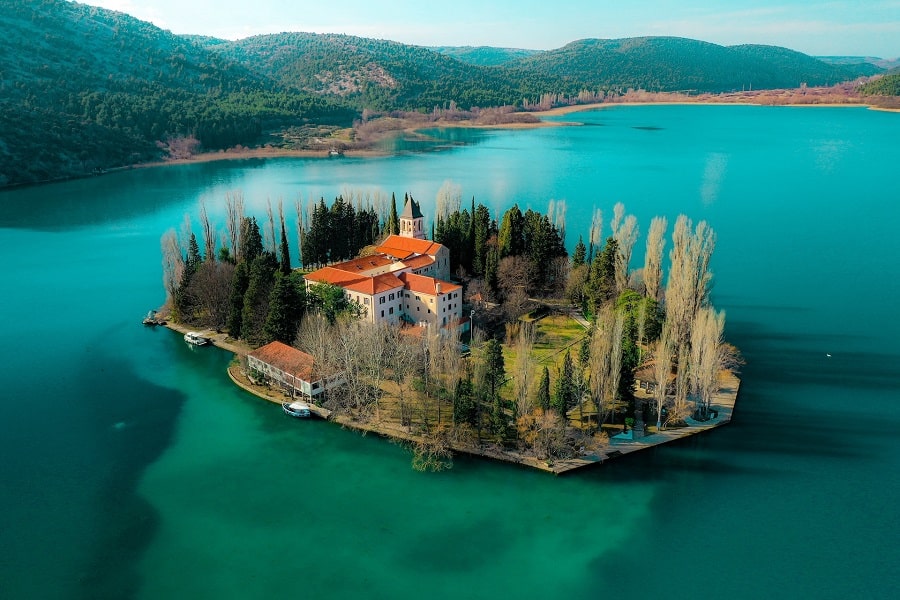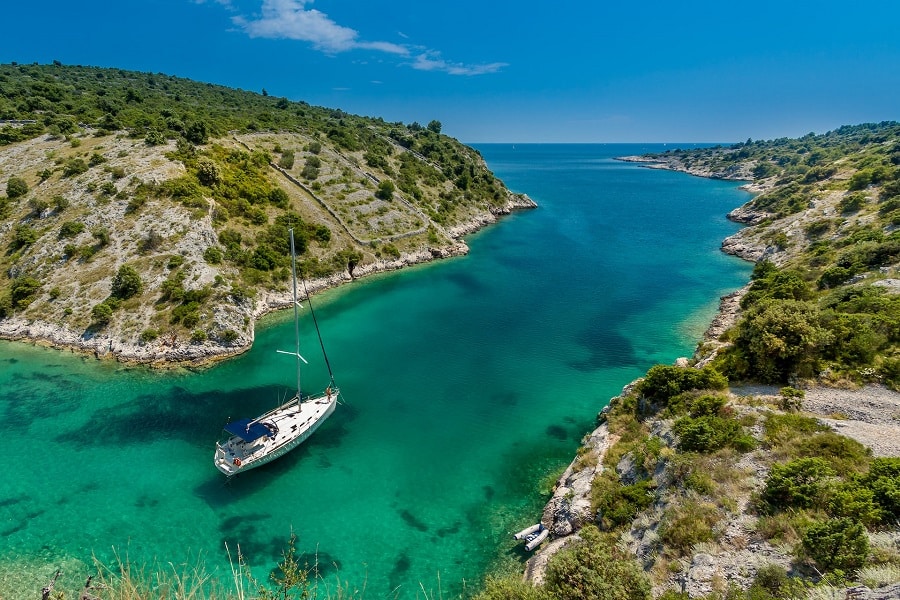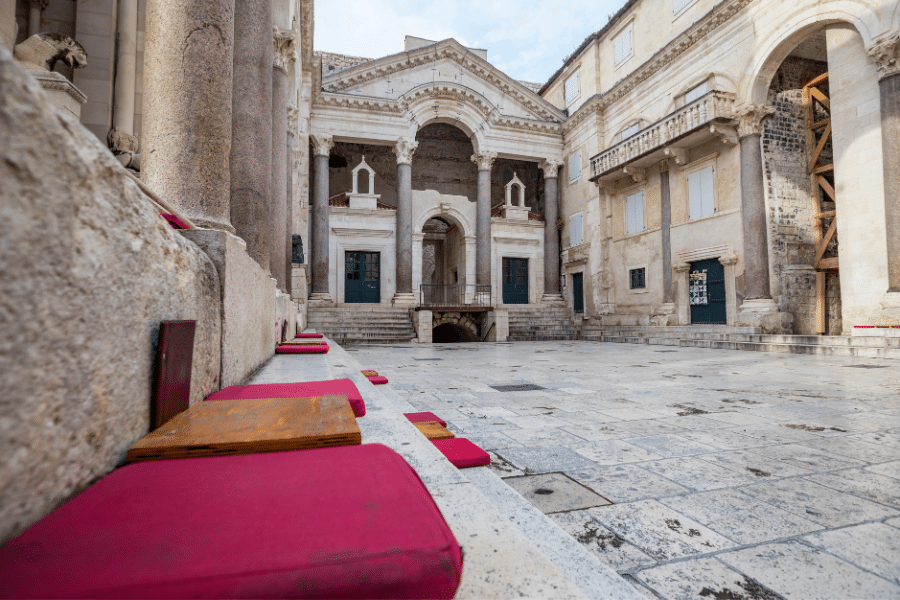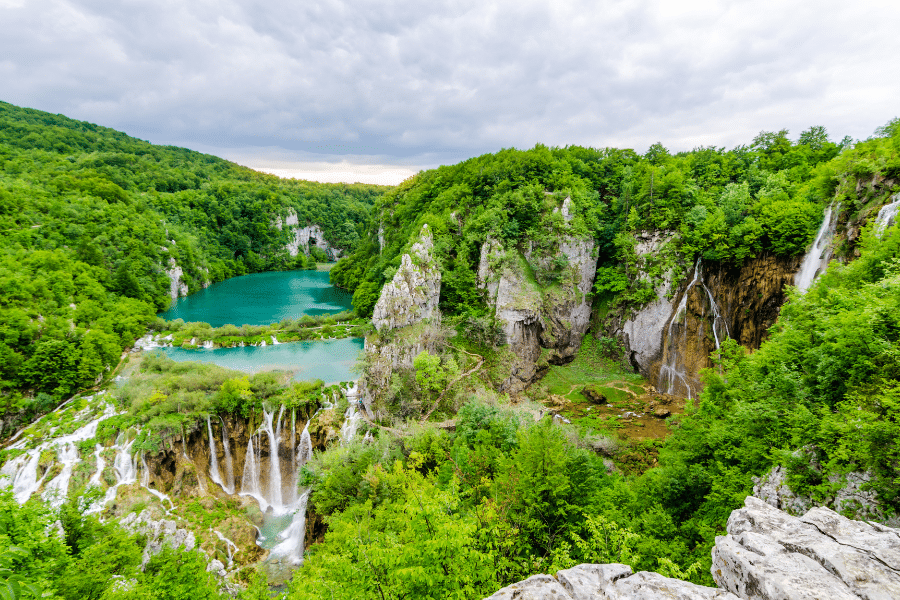Croatia is renowned for its beauty and delicious food, but it also has a very interesting, unique culture. There are so many fun facts about Croatia that make it worth discovering.
While living in a picturesque Mediterranean country may be alluring, it’s helpful to delve deeper into its less obvious intricacies. By familiarizing yourself with the culture, language, climate, and other aspects of Croatian life, you can better navigate the challenges and make the most of this remarkable country’s opportunities.
To aid in your preparation, we have compiled a list of 10 surprising facts that will give you valuable insights into what to expect when visiting or moving to Croatia.
1. Dubrovnik has enjoyed centuries of fame
Dubrovnik, a city located on the southern coast of Croatia, has been famous for centuries and continues to captivate visitors from around the globe. Known as the “Pearl of the Adriatic,” Dubrovnik’s rich history and breathtaking beauty have contributed to its enduring fame.
Dating back to the 7th century, Dubrovnik was a prominent maritime city-state and a vital trade hub in the Mediterranean. The city’s impressive city walls, dating back to the medieval era, were a testament to its strength and symbolized power and prosperity.
During the Renaissance, Dubrovnik flourished as a center of arts, culture, and learning. Poets, playwrights, and scholars were drawn to the city, creating a vibrant intellectual atmosphere.
Dubrovnik’s architecture showcases a harmonious blend of Gothic, Renaissance, and Baroque styles, with notable landmarks such as the stunning Rector’s Palace and the iconic Sponza Palace.
Dubrovnik’s fame skyrocketed in modern times due to its inclusion on the UNESCO World Heritage list 1979. The city’s remarkably preserved historic center, with its limestone-paved streets, ornate churches, and palaces, continues to enchant visitors with its timeless charm.
Furthermore, Dubrovnik gained widespread recognition as a filming location for the popular television series “Game of Thrones,” further solidifying its status as a must-visit destination.
Dubrovnik’s enduring fame can be attributed to its historical legacy, architectural splendor, and the unforgettable experiences it offers visitors. As a city steeped in history, beauty, and cultural richness, Dubrovnik continues to shine as one of Croatia’s most beloved and renowned destinations.
2. Smallest town in the world
Tucked away in the picturesque hills of Istria, Croatia, lies a hidden gem that holds the title of the smallest town in the world – the town of Hum. With just around 20 people, Hum exudes charm and tranquility, offering visitors a glimpse into a bygone era.
Hum’s origins date back to the 11th century when it was established as a fortress. Over time, it grew into a small settlement, surrounded by medieval walls that still stand today. Stepping into the town feels like stepping back in time, with its narrow cobblestone streets, stone houses, and ancient churches.
Hum’s compact size allows visitors to explore its charming streets within minutes. Strolling through the town, you’ll discover tiny squares, hidden courtyards, and delightful stone houses adorned with vibrant flowers. The Church of the Assumption, dating back to the 12th century, is a testament to the town’s historical significance.
While Hum may be small, it packs a punch in terms of hospitality. The locals warmly welcome visitors, offering a taste of traditional Istrian cuisine and renowned local spirits, such as mistletoe brandy and honey liqueur.
In addition to its historical and cultural appeal, Hum’s idyllic location provides breathtaking views of the Istrian countryside. Surrounded by rolling hills, vineyards, and olive groves, the town is an excellent starting point for exploring the region’s natural beauty.
3. Home to Europe’s oldest town
Croatia proudly holds the distinction of being home to Europe’s oldest town. This tremendous historical treasure dates back to prehistoric times. The city, known as Vinkovci, is located in the eastern part of the country and has a history that spans over 8,000 years.
Archaeological excavations in Vinkovci have revealed evidence of human settlement from the Neolithic period, making it one of Europe’s oldest continuously inhabited areas. The town has witnessed the rise and fall of different civilizations, including the Romans, Goths, Huns, and Ottomans, each leaving their mark on its rich tapestry of history.
Visitors to Vinkovci can explore the remnants of its ancient past through the well-preserved archaeological sites, museums, and cultural events that celebrate its heritage.
The town offers a fascinating glimpse into the lives of its early inhabitants, with artifacts such as pottery, tools, and jewelry providing insights into their daily lives and customs.
Being the oldest town in Europe, Vinkovci is a testament to Croatia’s deep historical roots and enduring legacy. It is a destination that captivates history enthusiasts and showcases the country’s commitment to preserving its cultural heritage for generations to come.
4. Croatia’s old currency was named after a rodent
In Croatia’s fascinating history, there was a time when the country had its currency named after a rodent – the dinar. The Croatian dinar was in circulation from 1991 to 1994, during the early years of Croatia’s independence following the dissolution of Yugoslavia.
The Croatian dinar, symbolized by the abbreviation “HRD,” derived its name from the word “dinar,” historically used as a currency unit in various countries. However, what made Croatia’s dinar unique was its colloquial nickname: the “kuna.”
The term “kuna” translates to “marten” in English, referring to a small mammal from the weasel family that inhabits Croatian forests. The kuna has a distinctive appearance, known for its brown fur and bright white throat patch.
To honor this indigenous animal, the Croatian dinar was called the “kuna.” Using a rodent’s name for a national currency may seem unusual. Still, it highlights Croatia’s unique cultural and historical connections. The kuna serves as a reminder of the country’s rich natural heritage. It adds an exciting twist to Croatia’s monetary history.
5. Croatia has over 1,200 islands
Croatia is a country renowned for its stunning coastline, but it is also home to over 1,200 islands. Scattered along the Adriatic Sea, these islands add an extra layer of beauty and charm to Croatia’s already breathtaking landscape.
Each island has its unique character and allure. From popular tourist destinations like Hvar and Korčula to lesser-known gems like Vis and Mljet, Croatia’s islands offer diverse experiences. Some islands are known for their vibrant nightlife and bustling beach scenes, while others provide secluded coves and tranquil retreats.
Exploring the islands allows visitors to discover hidden beaches, explore ancient ruins, and immerse themselves in the laid-back island lifestyle. Whether you’re looking for adventure or relaxation, Croatia’s islands provide an idyllic setting.
From the bustling city of Split to the historic charm of Dubrovnik, Croatia’s islands offer a perfect escape from the mainland. Whether you choose to island-hop or settle on one specific island, you’re sure to be captivated by the beauty and tranquility these Croatian gems offer.
5. The 0rigins of the Dalmatian dogs
The Dalmatian breed of dogs is instantly recognizable with its unique coat pattern of black or liver spots on a white background. But have you ever wondered where these distinctive dogs originated? The origins of Dalmatians stem from the region of Dalmatia, located along the eastern coast of the Adriatic Sea in Croatia.
The exact origins of Dalmatians are unclear and shrouded in mystery. However, they have a long history and are believed to have existed for centuries. Artifacts and illustrations depicting spotted dogs resembling Dalmatians have been found in ancient Egyptian tombs, indicating a much older lineage.
Dalmatians gained popularity in the 19th century when they were utilized as carriage dogs, guarding the horses and carriages of nobles, and assisting with fire brigade duties.
Their athleticism, endurance, and distinctive appearance made them well-suited for these roles. Over time, they transitioned into beloved family pets and became popular show dogs and companions.
Dalmatians are cherished worldwide for their unique and striking appearance, playful nature, and loyalty. While their exact origins may remain somewhat enigmatic, there is no doubt that Dalmatians have a rich and storied history, with their roots firmly planted in the coastal region of Dalmatia, Croatia.
7. Home to the highest number of UNESCO intangible goods
Croats take great pride in their rich cultural heritage, and it’s no surprise that Croatia is home to an impressive number of World Heritage items. This small European country boasts many UNESCO World Heritage sites that showcase its historical and architectural significance.
From the stunning Old City of Dubrovnik, a well-preserved medieval fortress city with iconic walls and cobblestone streets, to the historical complex of Split with the magnificent Diocletian’s Palace, Croatia’s World Heritage sites are truly remarkable.
The Plitvice Lakes National Park, with its cascading waterfalls and turquoise lakes, is another natural wonder that has earned its place on the prestigious list.
But the list doesn’t end there. Croatia’s World Heritage items also include the ancient city of Trogir, the Euphrasian Basilica in Poreč, the Stari Grad Plain on the island of Hvar, and the Cathedral of St. James in Šibenik, among others. Each site showcases the country’s rich history, architectural prowess, and cultural significance.
For history enthusiasts, nature lovers, and avid explorers, Croatia’s abundance of World Heritage items provides a captivating glimpse into the country’s past and remarkable contributions to the world.
Whether you’re strolling through ancient streets or marveling at natural wonders, Croatia’s World Heritage items offer an unforgettable journey through time and beauty.
8. “Blue hair” instead of “blonde hair”
There is a unique linguistic quirk in the Croatian language that may surprise many. Instead of using the term “blonde hair” to describe someone with light-colored hair, Croatians say “blue hair” (plava kosa). While this may initially seem puzzling, it is important to understand the historical and cultural context behind this linguistic choice.
The term “blue hair” is believed to have roots in the ancient Slavic tradition of associating lighter hair colors with blue. In the past, the Slavic people used “blue” to represent light or fair hair, reflecting their admiration for this physical attribute. Over time, this metaphorical usage became ingrained in the Croatian language, resulting in today’s peculiar expression.
This linguistic phenomenon is a fascinating example of how languages evolve and develop unique idiomatic expressions. So, if you find yourself in Croatia and hear someone referring to “blue hair” instead of “blonde hair,” rest assured that it’s simply a charming linguistic peculiarity that adds to the richness and diversity of the Croatian language.
9. World’s first torpedo was developed in Croatia
The world’s first torpedo, an innovative and groundbreaking weapon, revolutionized naval warfare forever. Developed in the 1866 by the Croatian inventor Ivan Lupis, the torpedo was a self-propelled underwater missile capable of delivering a devastating blow to enemy ships. It marked a significant departure from traditional naval tactics and forever changed the dynamics of naval battles.
Lupis’ torpedo was steam-powered and equipped with a warhead, a propulsion system, and a guidance mechanism. It could be launched from a surface vessel and propelled itself underwater, homing in on its target with precision. This breakthrough invention gave naval forces a powerful tool to attack enemy ships from a distance, without requiring direct engagement.
The impact of the world’s first torpedo was immense. It provided a new strategic advantage, allowing smaller and faster torpedo boats to take on larger, heavily armored warships. It played a crucial role in both World Wars, contributing to the destruction of numerous enemy vessels.
The development of the world’s first torpedo showcased Croatia’s ingenuity and innovation in the field of military technology. This historic invention paved the way for subsequent advancements in underwater warfare, including the development of guided missiles and modern submarine warfare.
10. Picigin, a traditional Croatian shallow water sport
Picigin is a unique and traditional Croatian sport enjoyed for generations, particularly along the country’s stunning coastline. Originating in Split, Picigin is played in shallow waters, typically on sandy beaches.
The game involves a small ball, usually made of rubber, tossed and kept in the air using hands, feet, or any body part. The objective is to prevent the ball from touching the water, showcasing impressive acrobatic moves and coordination. Players form a circle and pass the ball to one another, displaying their agility and skill in keeping it afloat.
What makes Picigin particularly fascinating is its casual and lighthearted nature. It is not a competitive sport in the traditional sense but rather a playful and enjoyable activity. Friends, families, and strangers often gather to play together, fostering community and camaraderie.
Picigin is not only a beloved pastime for locals but also captivates the attention of tourists who visit Croatia’s stunning beaches. It embodies the spirit of relaxation, joy, and connection with nature for which the country is known.


